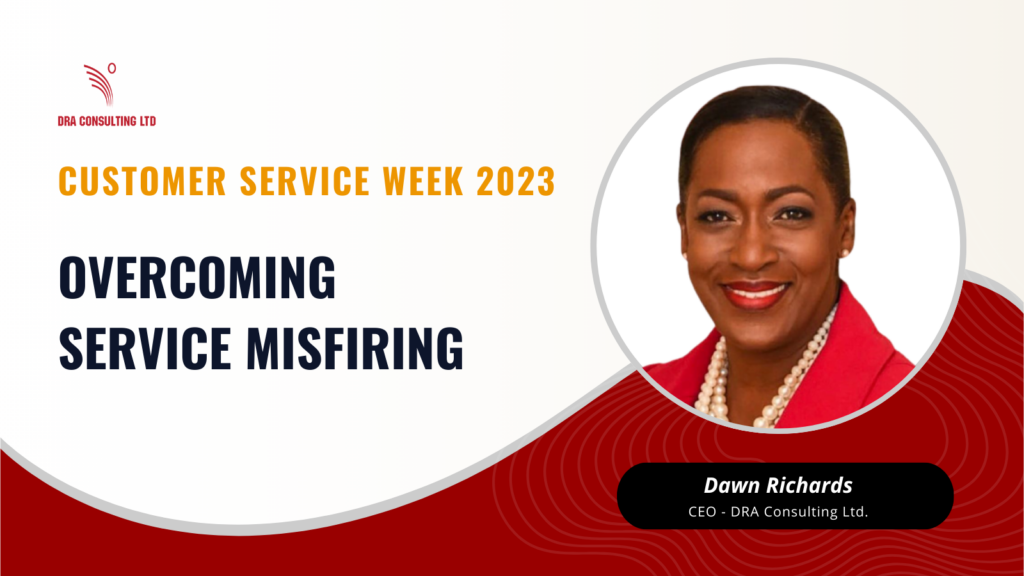Well, here we are, recognizing another customer service week yet again. Whilst it’s always a good thing to celebrate great service delivery, getting customer experience right can be a hit and miss job. Lots of misfiring if a business does not know what it’s doing. With a little bit of strategic intelligence though, the whole board game can change in favour of the business getting it right with its customers.
Irrespective of the delivery effort level, misfiring in achieving a great customer outcome is “a thing.” Ask any business that is struggling to capture and sustain high ratings on its customer sentiment feedback surveys. For those businesses that may be caught in the misfiring trap and for those that wish to avoid the entrapment, there are prescriptions and solutions that don’t require a post graduate degree in rocket science.
When the short-term view dominates decision-making on issues that affect the customer, guess what happens? Sales and selling become a core business lever, whilst service gets treated with indifference.
Let’s start with a look at horizon misfiring. Businesses tend to look at service delivery through day-to-day, short term lens, when a long-term view is a better bet. When the short-term view dominates decision-making on issues that affect the customer, guess what happens? Sales and selling become a core business lever, whilst service gets treated with indifference. The overarching mindset is that commercial growth is being driven by revenue, which, in turn, is a derivative of conversion in the sales pipeline. Without a sense of caution, a short term view of the customer-to-revenue relationship, may sabotage long term commercial success.
Conversely, when a business takes a long view of the horizon, a window of opportunity to nurture long term customer relationships and the sustaining power of those relationships to build repeat business and customer loyalty, presents itself. This long term view, when coupled with the right mix of service delivery inputs, reduces the risk of misfiring.
Without a sense of caution, a short term view of the customer-to-revenue relationship, may sabotage long term commercial success.
A sluggish response to learning customers inside out, increases the risk of service misfiring. Picture the converse of sluggishness. Imagine the bottom-line impact if a restaurant makes it a standard operating practice to ask diners if they are celebrating a special occasion? The restaurant may discover that the majority of its diners come to celebrate milestones and so, can offer the diners special favours in recognition of the occasion. Sustaining this practice, will mean that the brand will become known for its attention to a small detail that converts into a memorable occasion. As word gets around, we know what will happen to patronage levels. The takeaway here, is that customer intelligence is gold to designing the brand experience. This isn’t a novel practice, it’s just one that’s not widespread enough.
This next misfiring, namely poor engagement, is so very common. How customers are served determine how they feel about a business. The culture of a business is the repository of the values that undergird its human encounters. If courtesy, empathy and helpfulness characterize the culture, you can be certain that customers will not complain about feeling invisible, being ignored or being subjected to inequitable treatment. Even unruly customers will be treated with dignity whilst being escorted out of the establishment.
Conversely, when a business takes a long view of the horizon, a window of opportunity to nurture long term customer relationships and the sustaining power of those relationships to build repeat business and customer loyalty, presents itself.
Customers fire businesses. If I were to ask businesses to quantify how many customers fired the business on a daily, weekly or monthly basis, I suspect that those businesses would be hard pressed to provide an accurate answer. It’s a huge misfiring if this metric is not tracked and remediated continually. Tracking this trend allows a business to elevate the probability of customer experience successes.
The world of business is at a juncture where fundamental service delivery failures should no longer be “a thing.” Businesses should have eliminated the fundamental sins of unanswered phones, faulty online business platforms, sluggish response timelines, bureaucratic processes and employees who are anything but eager to serve. Integrating human and digital labour, with artificial intelligence to eliminate fundamental sins, is now a business imperative.
This long term view, when coupled with the right mix of service delivery inputs, reduces the risk of misfiring.
This is the era where businesses should be relishing the success of the many customer experience acceleration strategies that they have deployed, instead of being mired in hit and miss strategies that cause reputational damage daily.
Finally, we are in an era where a great customer experience is no longer a differentiator. It is now a standard expectation held by customers.
So, how can a business respond to this customer signal?
May I suggest a self-examination to determine where it falls on the service maturity scale? This scale measures service delivery apathy on the low end and progresses to service maturity on the upper end.
Useful starting point, wouldn’t you say?

